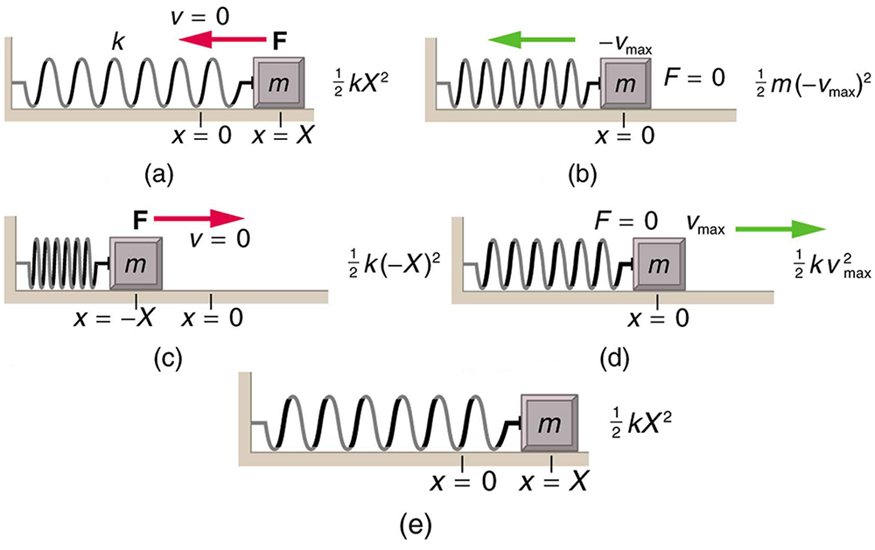| << Chapter < Page | Chapter >> Page > |
Consider a mass attached to a spring. This system oscillates when in air because air exerts almost no force on the spring. Now put this system in a liquid, say, water. You will see that the system hardly oscillates when in water. When the system is submerged in water an external force acts on the oscillator. This force is exerted by the liquid against the motion of the spring-mass oscillator and is responsible for the inhibition of oscillations. A force that inhibits oscillations is called a “damping force,” and the system that experiences it is called a “damped oscillator." A damped oscillator sees a change in its energy. With time the total energy of the oscillator, which would be its mechanical energy, decreases. Since energy has to be conserved, the energy gets converted into thermal energy, which is stored in the water and the spring.
Damping oscillatory motion is important in many systems, and the ability to control the damping is even more so. This is generally attained using non-conservative forces such as the friction between surfaces, and viscosity for objects moving through fluids. The following example considers friction. Suppose a 0.200-kg object is connected to a spring as shown in [link] , but there is simple friction between the object and the surface, and the coefficient of friction is equal to 0.0800. (a) What is the frictional force between the surfaces? (b) What total distance does the object travel if it is released 0.100 m from equilibrium, starting at ? The force constant of the spring is .

Strategy
This problem requires you to integrate your knowledge of various concepts regarding waves, oscillations, and damping. To solve an integrated concept problem, you must first identify the physical principles involved. Part (a) is about the frictional force. This is a topic involving the application of Newton’s Laws. Part (b) requires an understanding of work and conservation of energy, as well as some understanding of horizontal oscillatory systems.
Now that we have identified the principles we must apply in order to solve the problems, we need to identify the knowns and unknowns for each part of the question, as well as the quantity that is constant in Part (a) and Part (b) of the question.
Solution a
Discussion a
The force here is small because the system and the coefficients are small.
Solution b
Identify the known:

Notification Switch
Would you like to follow the 'College physics for ap® courses' conversation and receive update notifications?